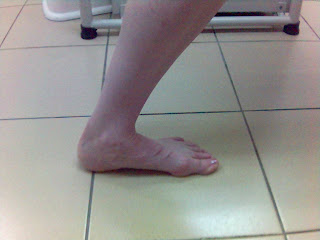Team Physician 'trouble' in Field Hockey
You are required to arrive at the game venue earlier than everyone else to prepare set up your things and prepare the drinks. Prior to that you make sure that your medication and taping inventory in your bags (and trolley) are updated and your water and ice supply is ready. Ensure that you identify yourself to the tournament medical officer (if available) and assess the availablity of medical assistance in case of emergency. For best practice, organisers need to have an emergency service crew and ambulance on standby for the match. They should also have an AED and spinal board ready for cervical fracture immobilisation and evacuation.
Once the athletes arrive, you give them their sports drink bottles, review the injury status (and any other medical condition), tape the joints and assist in stretching. We watch the athletes warm-up (and join in if possible, as you are required to run on the pitch in the event of injury) and do their sports-specific drills before the match. You have to have your rigid tape and powder ready in case some of the sticks needed minor adjustments for grip. You may also need to have self-adhesive tape (e.g. Powerflex or Coban) to hold the shin pads and support the wrists (also prevent sweat from wetting the sticks). You need to ensure that you have 4-5 bags of cube/crushed ice for injuries. Have your Ethyl Chloride spray, scissors, suture set, tubigrip, gauze, povidone iodine ointment and surgical spirit ready in case of cuts, abrasions, lacerations and contusions. The coach and manager will need you to give your injury status report prior to selection of the team.
During the match, you need to be watching the match at all times. Ensure that there is free flow of sports drinks and mineral water for athletes (and officials). Athletes coming in and out of the pitch are 'checked' to ensure that are rehydrating well and injury free. You need to assist them in RICE treatment if there are injuries. Assess the injury and give an immediate injury status report to the coach as he may need to return to play. The decision to play should be based on medical facts and not on the need to play. Clean and dress bleeding wounds immediately and you may need to suture the patient on site if you are able to get a relatively clean environment with your sterile equipment. (to be continued)














.JPG)








.jpg)
.jpg)
.jpg)

.jpg)
.jpg)






.jpg)




.jpg)

.jpg)
.jpg)



